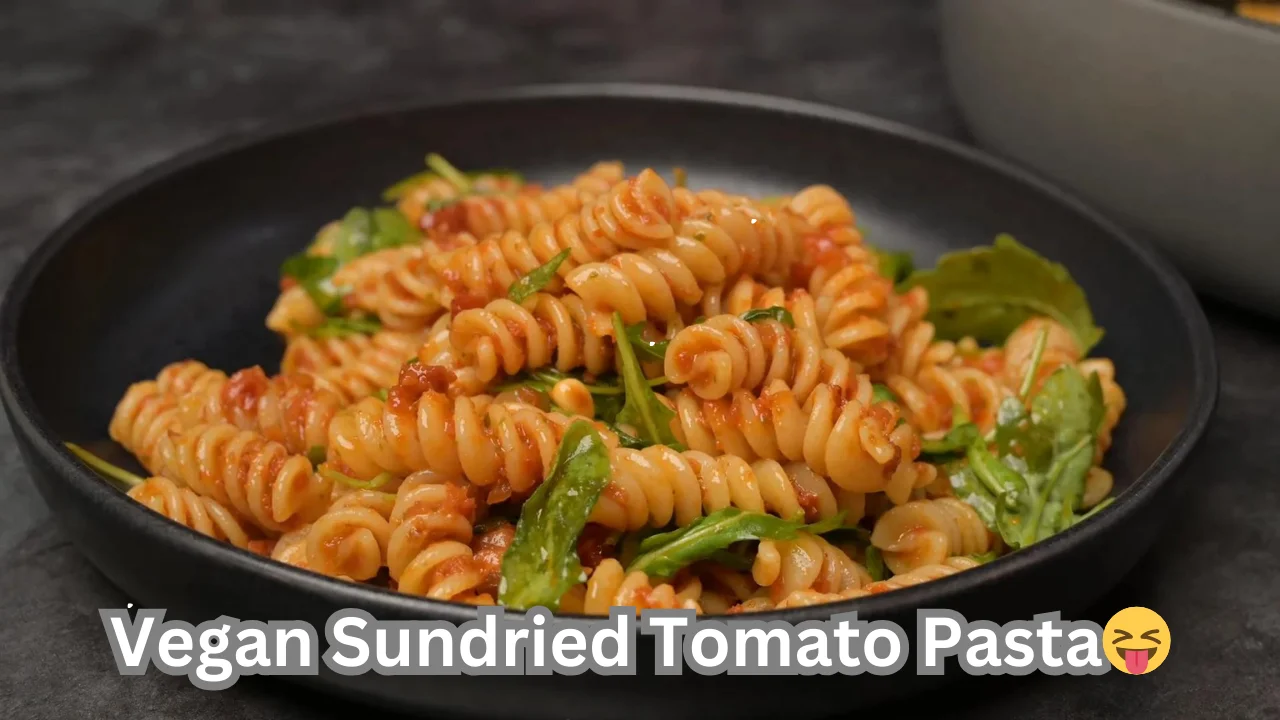If you’re craving a delicious and easy vegan pasta dish, this creamy vegan sundried tomato pasta is perfect for you. The sauce is made from scratch with simple ingredients and will satisfy both vegans and meat-eaters alike.

Serve this pasta with a side salad, toasted bread, or roasted vegetables for a complete meal. Enjoy.
My family loves pasta as long as the sauce is flavorful. It doesn’t need to be spicy, but it must have the rich flavors of tomatoes and vegetables. If you feel the same, try my other pasta recipes like Masala Pasta, vegan avocado pasta, or tikka masala pasta. You’ll love the tomato cream sauce in this recipe just as much as my family did.
Table of Contents
I picked up a small jar of sundried tomatoes from Trader Joe’s for this dish, which was perfect for a small group. Remember to strain the oil from the marinated sun-dried tomatoes before blending them for the sauce.
Vegan Sundried Tomato Pasta recipe video
Vegan Sundried Tomato Pasta Ingredients and Instructions:
Ingredients:
- 12 ounces pasta (penne, fusilli, or your favorite type)
- 1/4 cup olive oil
- 1 small onion, finely chopped
- 4 cloves garlic, minced
- 1/2 cup sun-dried tomatoes, drained and chopped, packed in oil
- 1 can (14.5 ounces) diced tomatoes
- 1/2 cup vegetable broth
- 1 tablespoon tomato paste
- 1 teaspoon dried oregano
- 1 teaspoon dried basil
- Salt and pepper to taste
- 1/4 cup fresh basil leaves, chopped
- 1/4 cup nutritional yeast (optional, for a cheesy flavor)
- Fresh basil leaves for garnish
Instructions:
Step 1: Cook the Pasta
Bring a large pot of salted water to a boil and cook the pasta until it reaches an al dente texture, following the package instructions. Drain and set aside, reserving about 1/2 cup of pasta water.
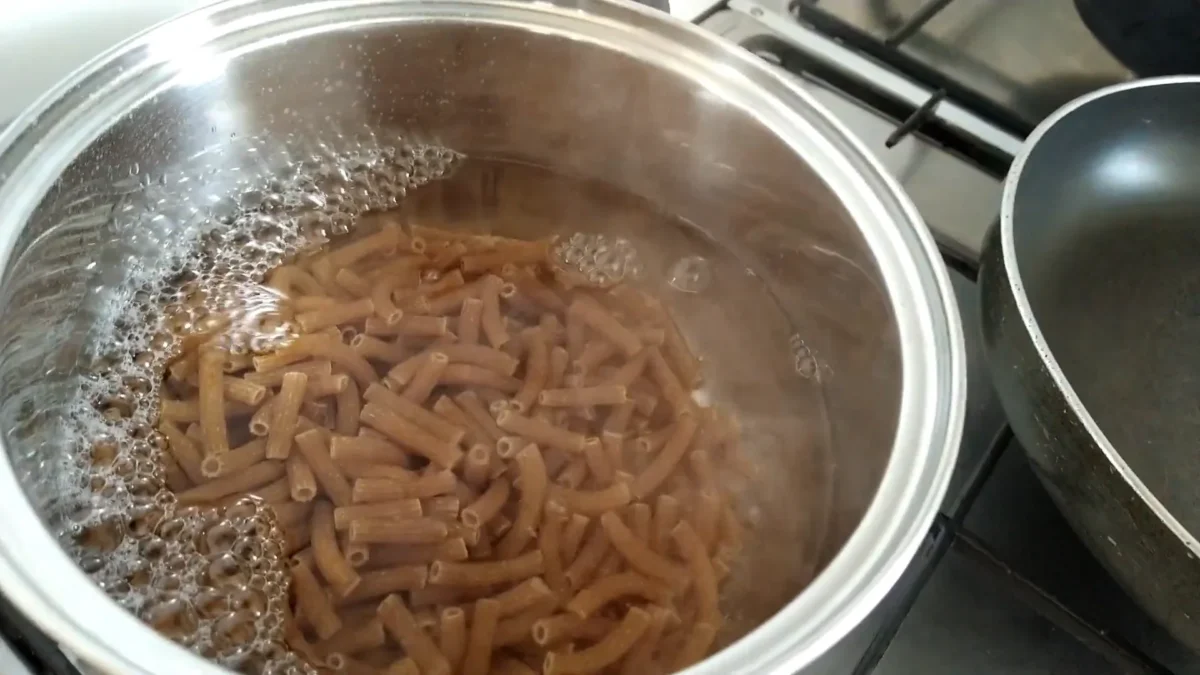
Step 2: Prepare the Sauce Base
In a large skillet, heat the olive oil over medium heat. Sauté the chopped onion until it turns soft and translucent, approximately 5-7 minutes.
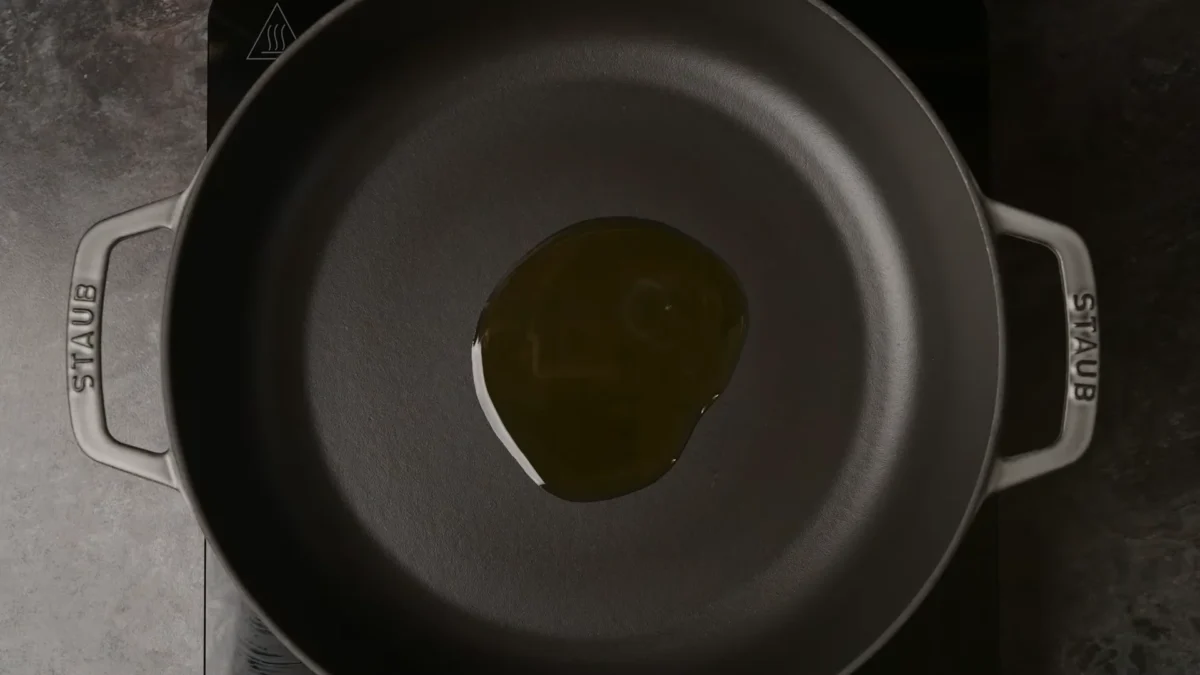
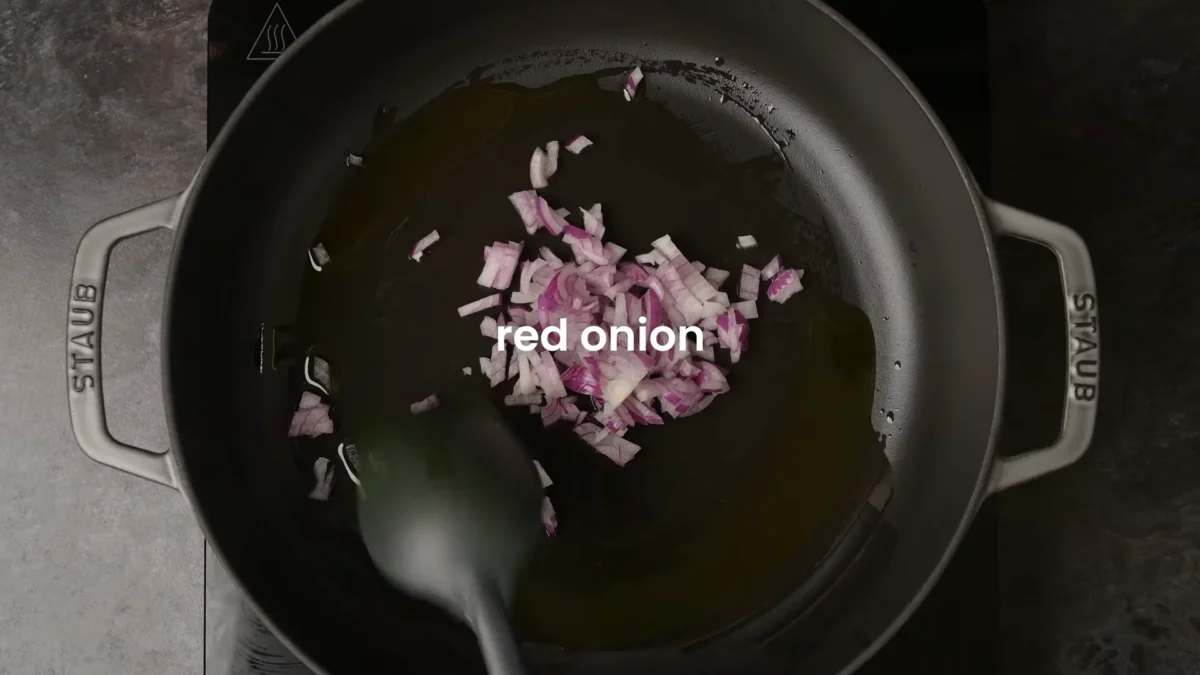
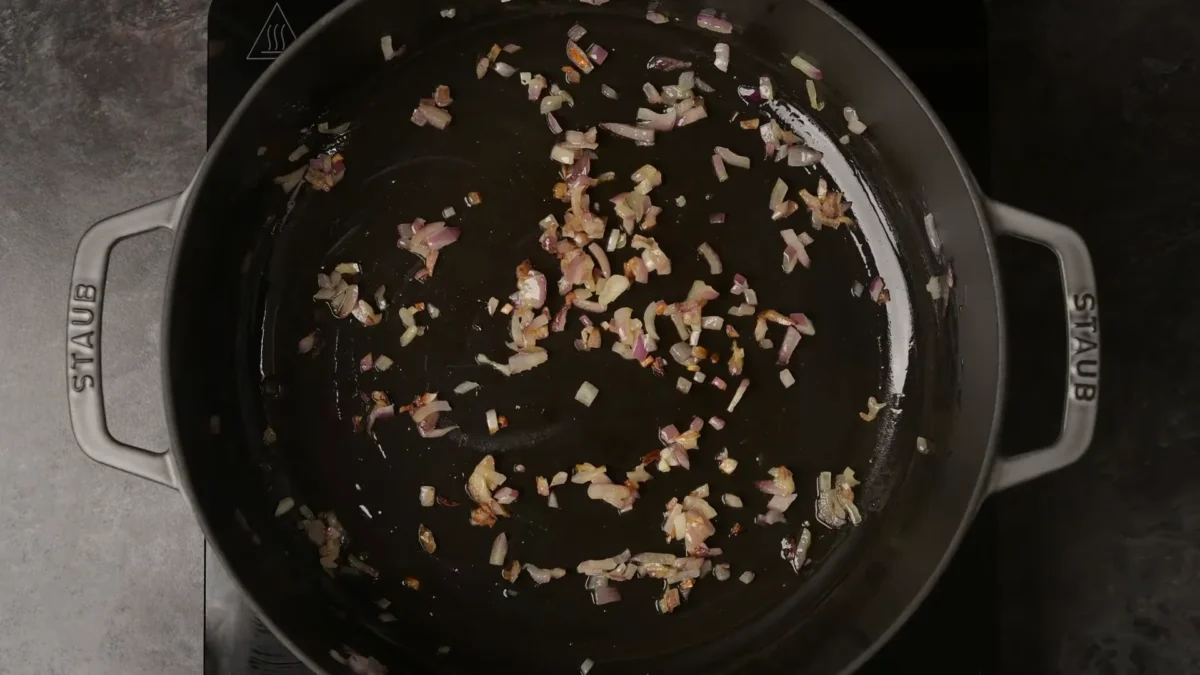
Step 3: Add Garlic and Sun-Dried Tomatoes
Add the minced garlic and chopped sun-dried tomatoes to the skillet. Cook for another 2-3 minutes, stirring frequently, until the garlic is fragrant.
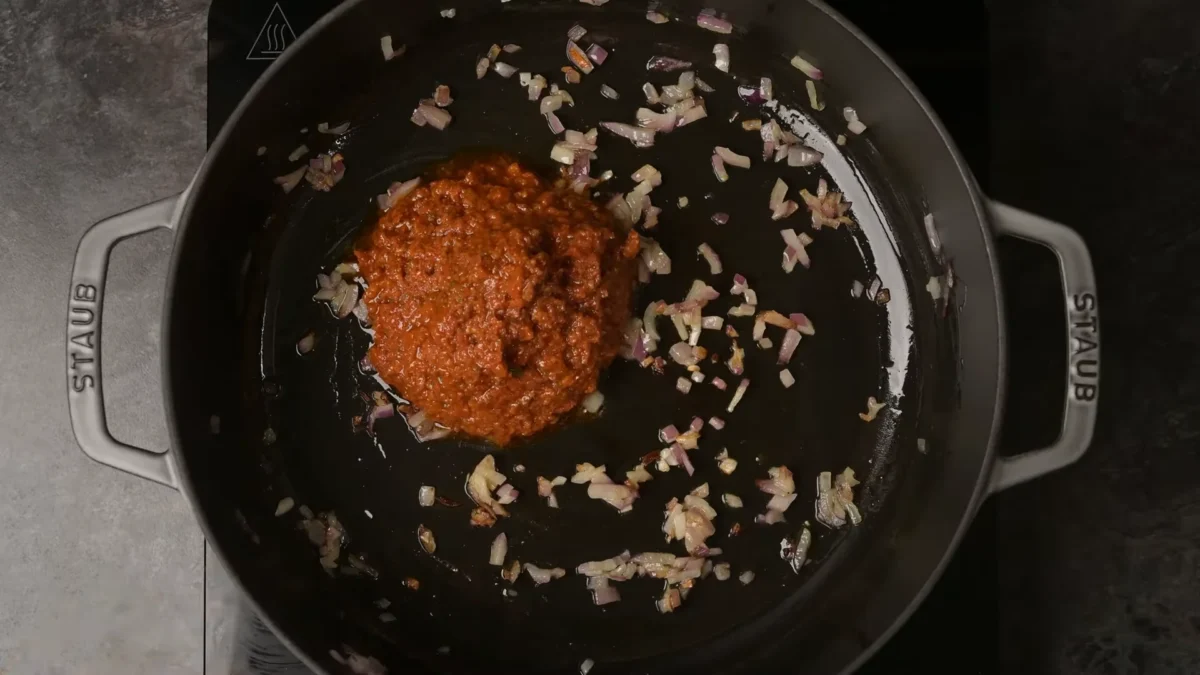

Step 4: Add Diced Tomatoes and Broth
Pour in the can of diced tomatoes (including the juice) and the vegetable broth. Stir in the tomato paste, dried oregano, and dried basil. Bring the mixture to a simmer.
Step 5: Simmer the Sauce
Reduce the heat to low and let the sauce simmer for about 15-20 minutes, stirring occasionally. If the sauce gets too thick, add some of the reserved pasta water to reach your desired consistency.
Step 6: Season and Add Fresh Basil
Season the sauce with salt and pepper to taste. Stir in the chopped fresh basil leaves and nutritional yeast, if using, for a cheesy flavor.
Step 7: Combine Pasta and Sauce
Mix the cooked pasta into the skillet with the sauce. Toss everything together until the pasta is well coated with the sauce. If needed, add a bit more pasta water to help the sauce cling to the pasta.
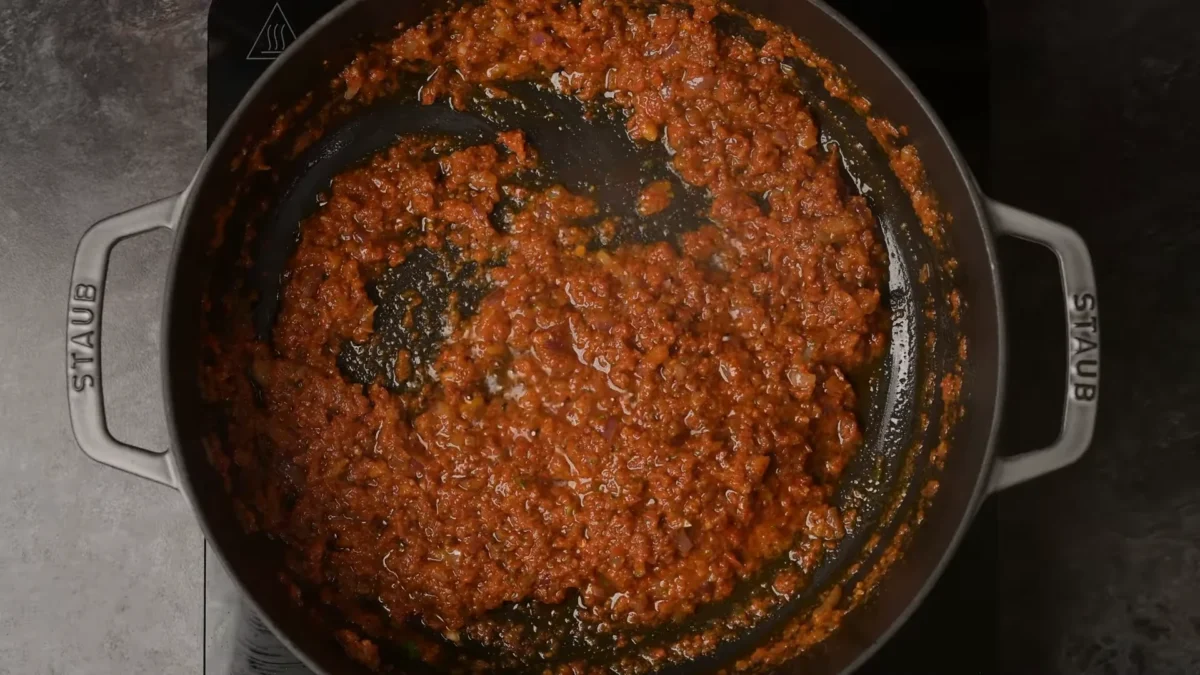
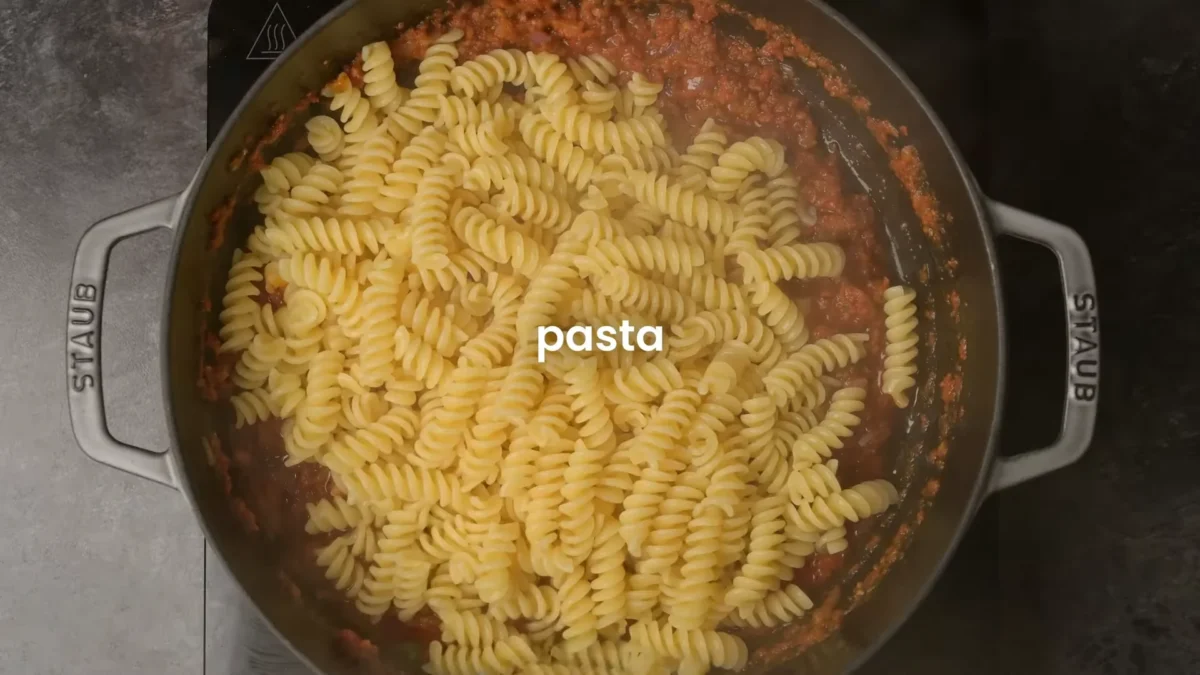
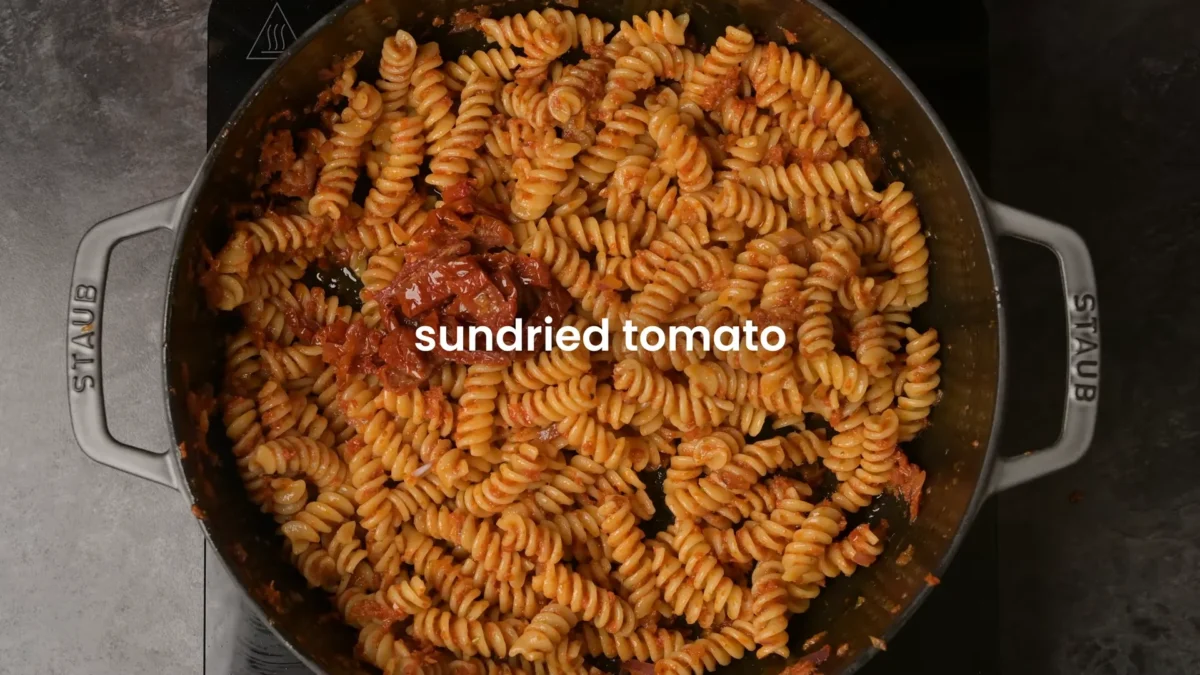

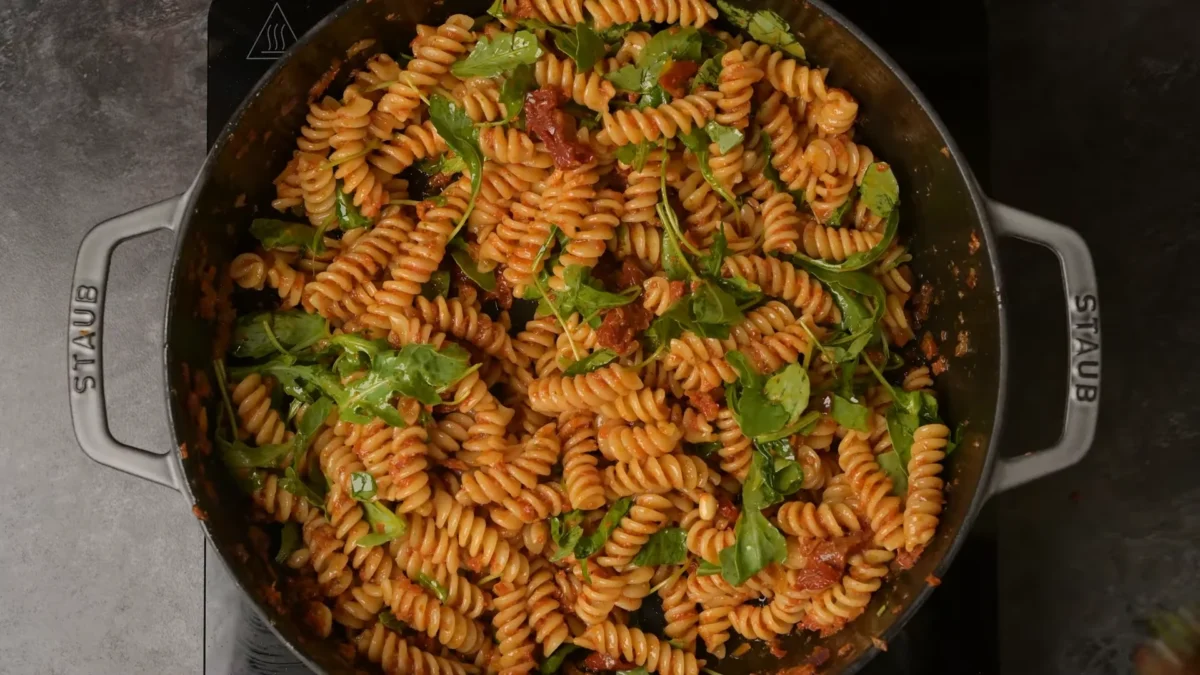
Step 8: Serve
Transfer the vegan sundried tomato pasta to serving plates. Garnish with extra fresh basil leaves for a burst of color and flavor.
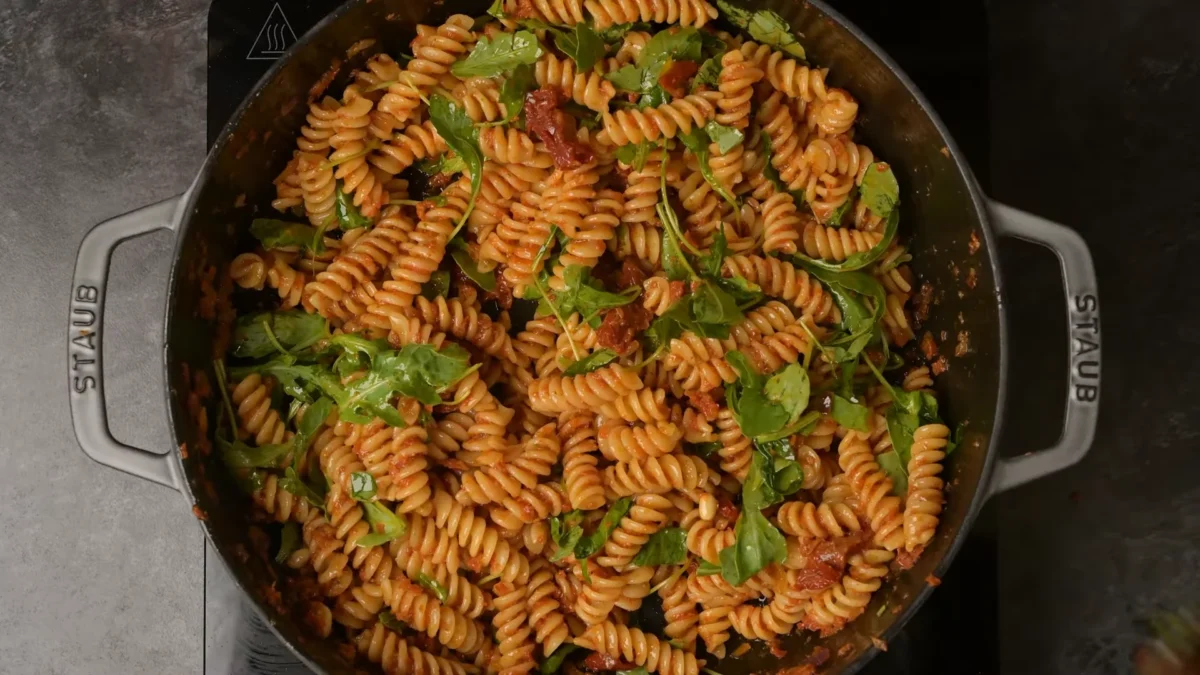

Step 9: Enjoy
Serve your vegan sundried tomato pasta hot, and enjoy the rich, savory flavors. Serve it with a side salad or some crusty bread to make a complete meal.
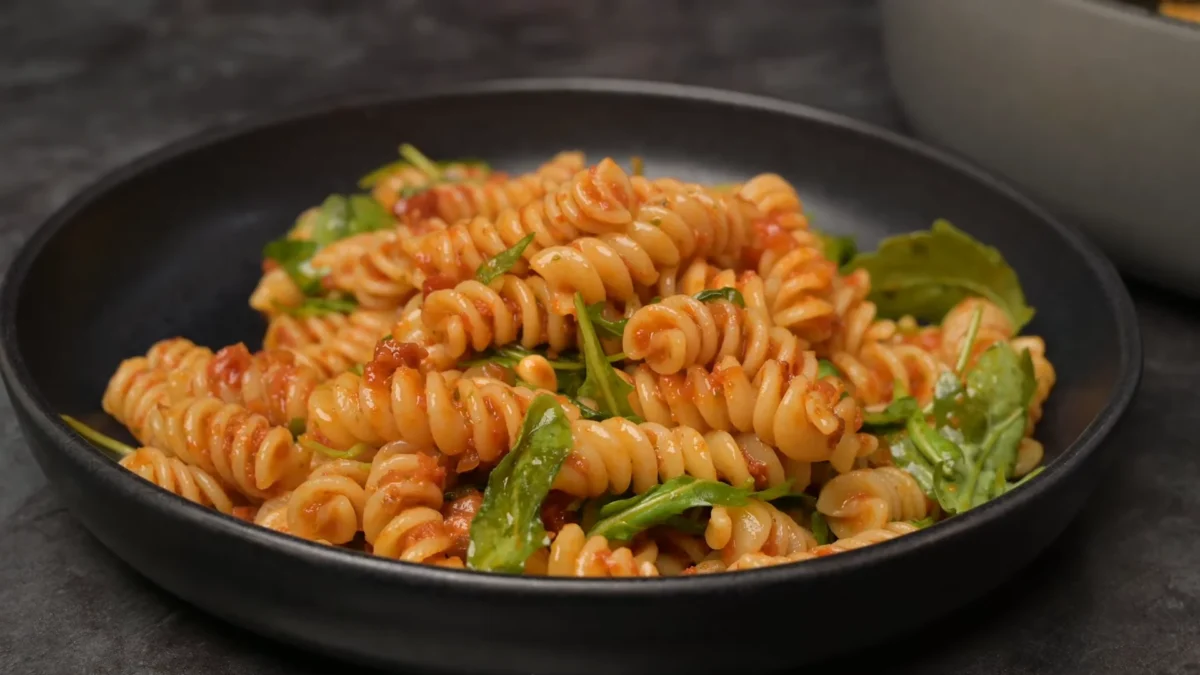
This vegan sundried tomato pasta is hearty, flavorful, and perfect for any day of the week. Enjoy.
Vegan Sundried Tomato Pasta Nutrition Information
| Nutrient | Amount per Serving (approx.) |
| Calories | 350 |
| Total Fat | 12g |
| – Saturated Fat | 2g |
| Cholesterol | 0mg |
| Sodium | 400mg |
| Total Carbohydrates | 52g |
| – Dietary Fiber | 4g |
| – Sugars | 6g |
| Protein | 8g |
| Vitamin A | 10% |
| Vitamin C | 25% |
| Calcium | 4% |
| Iron | 15% |
Vegan Sundried Tomato Pasta Health Benefits
- Heart Health: Olive oil contains monounsaturated fats, which are beneficial for heart health and reducing inflammation.
- Antioxidant-Rich: Sun-dried tomatoes and fresh tomatoes provide antioxidants like lycopene, which help protect cells from damage.
- Digestive Health: The dietary fiber from vegetables and pasta aids digestion and promotes a healthy gut.
- Bone Health: Nutritional yeast (if used) is a good source of vitamin B12 and calcium, supporting bone health.
- Immune Support: Garlic and onions are known for their immune-boosting properties.
- Vegan Protein: Nutritional yeast adds a boost of vegan protein and essential amino acids.
- Low Cholesterol: As a vegan dish, this pasta is free from cholesterol, promoting better heart health.
- Rich in Vitamins: Fresh basil and parsley add vitamins A and C, which are essential for immune function and skin health.
- Weight Management: The fiber and protein content help keep you full longer, aiding in weight management.
- Anti-Inflammatory: Ingredients like olive oil and fresh herbs have anti-inflammatory properties, beneficial for overall health.
Storage Instructions
- Refrigeration: Store any leftover vegan sundried tomato pasta in an airtight container in the refrigerator for up to 3-4 days.
- Freezing: You can freeze the pasta in a freezer-safe container for up to 2 months. Thaw overnight in the refrigerator before reheating.
Vegan Sundried Tomato Pasta Reheat and Reuse Instructions
Reheating:
- Stovetop: Reheat the pasta in a skillet over medium heat. Add a splash of water or vegetable broth to keep it from drying out. Stir occasionally until heated through.
- Microwave: Place the pasta in a microwave-safe dish, cover, and heat on medium power for 2-3 minutes. Stir halfway through to ensure even heating.
Reuse Ideas:
- Pasta Bake: Transfer leftover pasta to a baking dish, top with vegan cheese or breadcrumbs, and bake at 350°F (175°C) until bubbly and golden.
- Stuffed Peppers: Use the pasta as a filling for bell peppers. Stuff the peppers and bake until the peppers are tender.
- Pasta Salad: Serve the cold leftover pasta as a pasta salad. Add extra fresh veggies and a bit more olive oil and vinegar to refresh the flavors.
Enjoy your creamy and delicious vegan sundried tomato pasta.
Expert Tips
- Add Roasted Veggies: Enhance the dish with your favorite roasted vegetables for extra flavor and nutrition.
- Boost Seasonings: Feel free to ramp up the spices, herbs, and seasonings. Fresh basil, red pepper flakes, and paprika work well.
- Pasta Water: If your sauce is too thick, reserve some pasta water to adjust the consistency.
- Roasted Garlic: Use roasted garlic instead of fresh for a richer flavor in the sauce.
- Pasta Choices: You can use any type of pasta for this recipe. I prefer penne, as it holds more sauce in each bite. Any kind of sun-dried tomatoes will work too.
- Tomato Paste Option: Tomato paste can be used, but it won’t be as flavorful as sun-dried tomatoes.
FAQ’s
Q. What is Vegan Sundried Tomato Pasta?
Vegan Sundried Tomato Pasta is a plant-based dish featuring pasta tossed in a creamy or olive oil-based sauce made with sundried tomatoes. It’s packed with rich, tangy flavors and often includes garlic, fresh herbs, and nutritional yeast for added depth.
Q. What kind of pasta works best for this recipe?
You can use any pasta you love. Penne, spaghetti, or fusilli work particularly well because they hold onto the sauce nicely. Gluten-free pasta is also a great option if needed.
Q. How do I make the sauce creamy without dairy?
Blended cashews, almond milk, or coconut cream are popular choices for creating a creamy, dairy-free sauce. Some recipes also use silken tofu or soaked sunflower seeds as a base.
Q. Can I add vegetables to the pasta?
Definitely, Spinach, broccoli, cherry tomatoes, or mushrooms pair wonderfully with the sundried tomato flavor. Sauté the vegetables before tossing them in for extra flavor.
Q. What can I use instead of nutritional yeast?
If you don’t have nutritional yeast, you can skip it or use a vegan Parmesan substitute for a cheesy flavor. A touch of miso paste can also add a savory umami kick.
Q. How do I store and reheat leftovers?
Store leftovers in an airtight container in the fridge for up to 3 days. Reheat on the stovetop over low heat, adding a splash of water or plant-based milk to loosen the sauce if it thickens.

